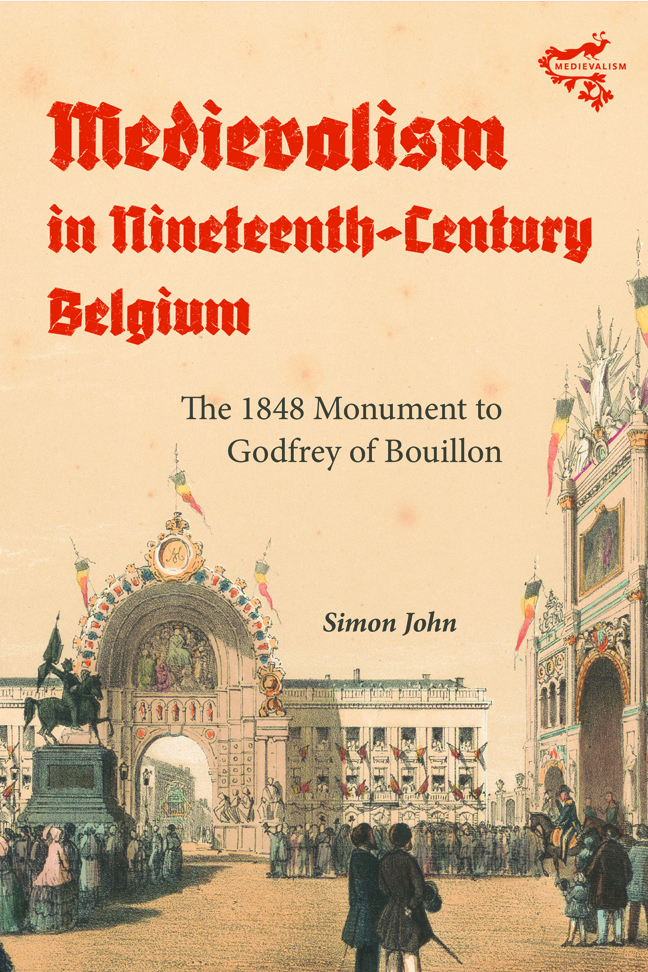Book contents
- Frontmatter
- Contents
- List of Illustrations
- Acknowledgments
- A note on language and names
- List of Abbreviations
- Preface
- Introduction
- 1 State-building, historical culture and public monuments in nineteenth-century Belgium
- 2 The physical setting of the monument: Brussels’ Place Royale
- 3 The creation of the monument
- 4 The changing meanings of the monument
- 5 The monument as a lieu de mémoire I: culture and politics
- 6 The monument as a lieu de mémoire II: history and national identity
- Conclusion
- Bibliography
- Index
- Medievalism
Preface
Published online by Cambridge University Press: 09 January 2024
- Frontmatter
- Contents
- List of Illustrations
- Acknowledgments
- A note on language and names
- List of Abbreviations
- Preface
- Introduction
- 1 State-building, historical culture and public monuments in nineteenth-century Belgium
- 2 The physical setting of the monument: Brussels’ Place Royale
- 3 The creation of the monument
- 4 The changing meanings of the monument
- 5 The monument as a lieu de mémoire I: culture and politics
- 6 The monument as a lieu de mémoire II: history and national identity
- Conclusion
- Bibliography
- Index
- Medievalism
Summary
May the national pantheon open to receive a new guest. Make way for Godfrey of Bouillon!
Charles Rogier, the Prime Minister of Belgium, shortly before the unveiling of the monument to Godfrey of Bouillon in the Place Royale, Brussels, during its inauguration ceremony on 15 August 1848.
On 15 August 1848, Brussels, the capital of Belgium – a young nation still consolidating the independence its inhabitants had gained through revolution in 1830–1 – was beset by heavy rain and wind. Despite the inclement weather, the foremost members of the nation's political community gathered, together with a large crowd, in the city's Place Royale to witness the inauguration of a new public monument. This square, a key thoroughfare of Brussels and a principal public space in the Belgian capital, is situated in the Quartier Royal (Koningswijk), close to the main seats of power, those of the Belgian monarchy (the Palais de Brux-elles/Paleis van Brussel) and federal parliament (the Palais de la Nation) (see Maps 1 and 2). The guest of honour at the ceremony was the king of the Belgians, Leopold I (r. 1831–65), who was accompanied by his wife, Queen Louise, and their children, including the king's son and heir, Prince Leopold (the future King Leopold II). Also present was Charles Rogier, a leader of the Belgian Revolution and the incumbent Prime Minister of Belgium, along with the rest of his administration, as well as many provincial and civic politicians. Following the royal family's arrival in the Place Royale at 12:45pm, the ceremony commenced.
The monument unveiled during this ceremony was dedicated to Godfrey of Bouillon (d.1100), a participant in the First Crusade (1096–9), and the first ruler of the kingdom of Jerusalem (1099–1100), the principal state established by the crusaders in the Holy Land. The monument, which still stands in the Place Royale today, is colossal. Its bluestone pedestal is 5.2m tall, and the immense bronze equestrian statue atop it reaches a further 4.93m high. The monument thus attains a total height of 10.13m (see Figure 1). It stands in the centre of the Place Royale, and both shapes and draws meaning from the space that it inhabits. It is in dialogue with the surrounding urban fabric, including the square's most prominent building, the church of Saint-Jacques-sur-Coudenberg (Sint-Jacob-op-Koudenbergkerk), against whose facade it is aligned (see Figure 2).
- Type
- Chapter
- Information
- Medievalism in Nineteenth-Century BelgiumThe 1848 Monument to Godfrey of Bouillon, pp. xxiii - xxxPublisher: Boydell & BrewerPrint publication year: 2023

